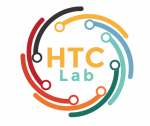Abstract: In an era of rapid technological and social change, do universities adapt enough to
play their important role in creating knowledge? To examine university adaptation, I
extracted the information contained in the course catalogs of over 450 US universities
spanning two decades (2000-2022). When there are changes in student demand, uni-
versities respond inelastically, both in terms of course quantity and content. Supply
inelasticity is especially pronounced in fields experiencing declining demand and is more
pronounced at public universities. Using Natural Language Processing, I further show
that while the content of existing courses remains largely unchanged, newly-created
courses incorporate topics related to current events and job skills. Notably, at selective
institutions, new content focuses on societal issues, while at less selective institutions,
new content emphasizes job-relevant skills. This study contributes uniquely to our un-
derstanding of the supply-side factors that affect how universities adapt to the rapidly evolving landscape.
Latest posts by Ryan Watkins (see all)
- How we (Anthropic) built our multi-agent research system - July 1, 2025
- Automatic Large Language Models Creation of Interactive Learning Lessons - June 29, 2025
- AI as Governance - June 29, 2025
